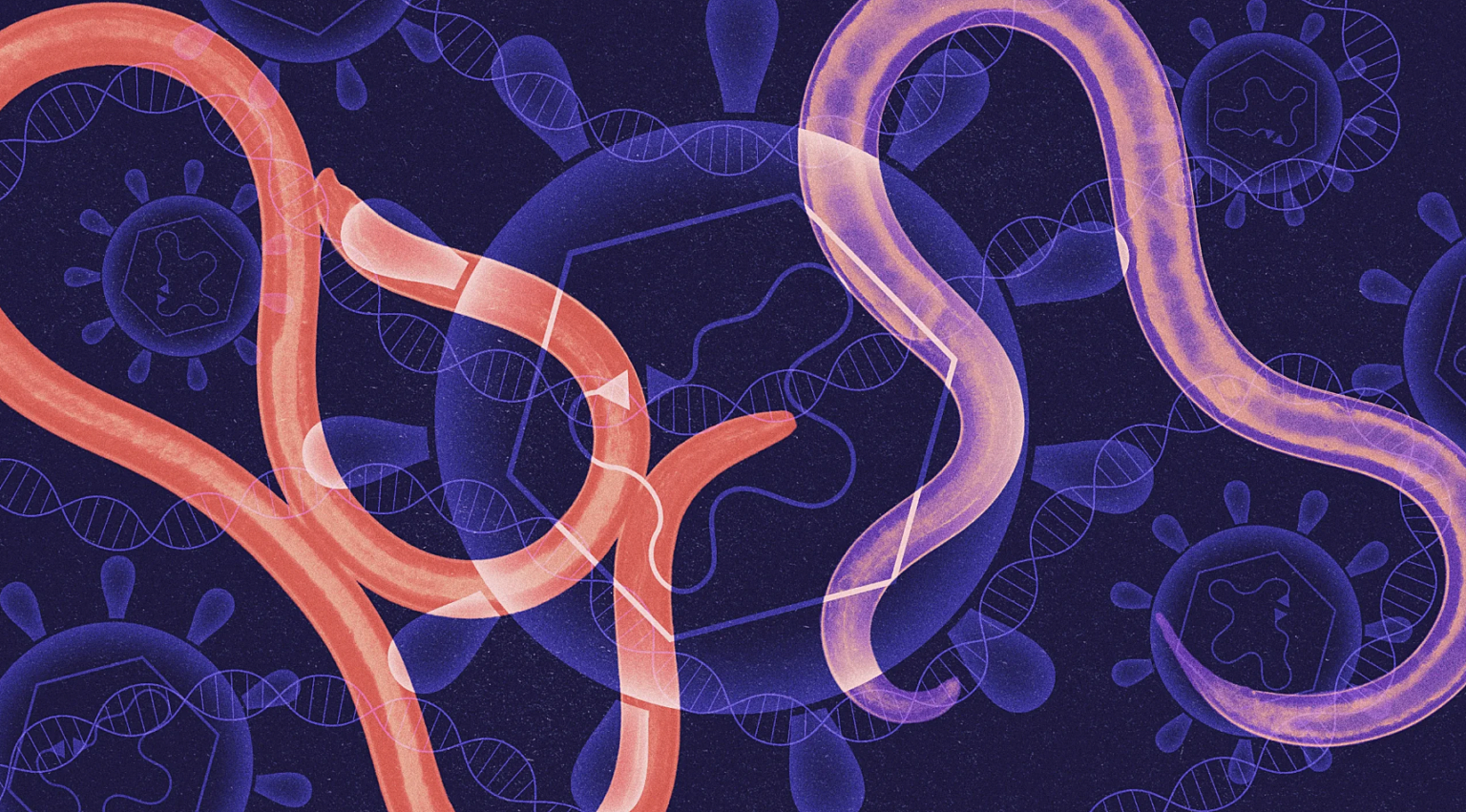In The News

07 August 2023
Selfish, Virus-Like DNA Can Carry Genes Between Species
From Quanta, Investigator SaraH Zanders provides expert commentary on selfish genes.
Read Article
News
What exactly is DNA? And how does it relate to research at the Stowers Institute?
Mike Peterson, a scientist in Sequencing & Discovery Genomics, explains the molecule found in nearly every cell of every living organism in this #BioBasics episode.
At the Stowers Institute for Medical Research, DNA is intertwined in nearly every aspect of our research—from development to regeneration to neuroscience. Below are five facts about DNA, the blueprint for all biology, and how it is being studied today.
What exactly is DNA?
DNA, the acronym for deoxyribonucleic acid, is a two-stranded macromolecule wound around an imaginary axis to form a double helix. On April 25, 1953, a groundbreaking paper defining DNA’s double helical structure was published in the journal Nature. Fifty years later, the scientific community celebrated the Human Genome Project’s sequencing of the first human genome. A comprehensive knowledge of different organisms’ genetic blueprints, including ours, is the basis for understanding what makes life work.
DNA is a packing pro
Like the 26 letters in the English alphabet that can be combined to form words, DNA’s alphabet contains four units called nucleotides commonly represented by the letters A, T, G, and C. The precise order or sequence of the 3 billion letters within each cell form the words or instructions needed to function. If stretched out, the length of DNA from a single cell would be around 6 feet, but special proteins help coil and condense DNA into compact structures called chromosomes much smaller than we can see. So, the next time you are frustrated by a tangled shoelace, think about what our cells must continually tangle and untangle.
How similar is our DNA to other animals?
While a fruit fly and a human look nothing alike, we share 60% of the same genes! One of the many reasons scientists, including those at the Stowers Institute, study fruit flies is that 75% of genes implicated in human diseases have counterparts in these tiny animals. Further up the tree of life, a mouse and a human share almost 98% of DNA, making these animals indispensable for the study of genetics.
How do Stowers scientists contribute to its sequencing?
By congressional order, DNA Day was first declared and celebrated in 2003 when the Human Genome Project was completed. However, little known outside the biology community, roughly 8% of it was missing. Scientists at the Stowers Institute helped fill in the gaps as part of an international collaboration called the Telomere-to-Telomere (T2T) consortium. T2T continues today in unraveling difficult-to-sequence regions characterized by stretches of repetitive DNA, which accounts for a great deal of genome variability from person to person!
Technology and DNA
The sequencing of the human genome, which began in 1990, took over ten years and cost nearly $3 billion. Technological advances have drastically reduced the time and cost for sequencing to several hours and just a few hundred dollars, resulting in a new field of data-driven biology called Bioinformatics. In recent years, DNA-editing technology called CRISPR-Cas9 has moved to the forefront of biological innovation and discovery research. Medicine is now beginning to develop CRISPR-based therapies, aiming to provide more targeted and personalized options for treatments.
In The News

07 August 2023
From Quanta, Investigator SaraH Zanders provides expert commentary on selfish genes.
Read Article
News

08 August 2023
Stowers scientists leverage the power of AI to uncover fundamentals of development
Read Article
News

31 March 2022
Stowers Institute researchers help assemble the complete human genome
Read Article
